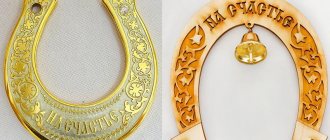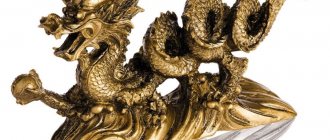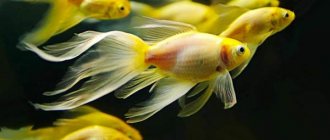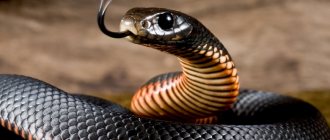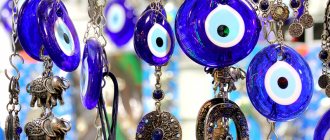From this article you will learn:
- What symbols represent Buddha in Buddhism?
- What are the 8 good symbols in Buddhism and what do they mean?
- What 8 Precious Objects did Buddha Receive?
- What symbolic objects are used to offer to Buddha?
Buddhism has its roots in the 4th–6th centuries. BC e. - the period when Siddhartha Gautama began to popularize his own religion in India about trials, the achievement of Nirvana and spiritual rebirth. Siddhartha did not welcome the use of his image, and in order to illustrate his teachings, he used various signs. There are special symbols of this religion that Buddha received as a gift from God after his enlightenment. We will tell you what each important symbol of Buddhism means in this article.
Symbolism of Buddhism and images of Buddha
Siddhartha Gautama opposed his followers and admirers to worship him. Therefore, both his own images and the images of his teachings do not belong to the period of his life. However, Gautama expressed his thoughts metaphorically in his sermons and used certain images, for example, when he talked with his students on the topic of turning the wheel of Dharma.
The main symbols of Buddhism and their meaning became known after the death of Gautama. For the most part, these were images reflecting his philosophy of life. The earliest sacred signs of Buddhism are the stupa and the wheel of Dharma.
As the religion spread and divided into different teachings, the symbols of Buddhism became more and more numerous. This religion gradually borrowed elements from the cultures with which it came into contact.
To depict the Enlightened One in different periods, the following symbols of Buddhism were mostly used:
- Wheel with 8 spokes, or Dharmachakra. Symbolizes the turning of the Enlightened Wheel of Truth and the change of fate.
- Bodhi. This tree is a symbol of Buddhism. It is believed that Gautama became Enlightened while sitting under him.
- Buddha's footprints. According to legend, he left footprints on the stone to remind his descendants of his presence in their material world.
- Empty Throne. Reminiscent of Gautama's royal origins and carries the idea of spiritual dominion.
- Begging bowl. A sign of Buddha's renunciation of all material goods. The bowl also symbolizes the lifestyle of a monk.
- A lion. One of the strongest symbols. According to tradition, the lion represents the rights of the ruler, strength and power.
Much later, the “Eyes of Buddha” symbol appeared, which can now often be found in Nepal. The Enlightened One looks in all four directions, which means his all-seeing mind.
Types of amulets
Figurines of the god of luck, happiness and fun come in different sizes.
The larger one can be placed on the floor in the house facing the door . For a medium-sized figure, place it on a shelf or chest of drawers. It’s convenient to always take the tiny one with you, and it will support you in any situation.
The most powerful amulets are those of white or golden color.
Traditional materials in ancient times were :
- tree;
- bone;
- fangs;
- animal horns.
Later they began to make them from metals, including precious ones, from glass, from stones:
- disgrace;
- jade;
- Agatha.
Now made from:
- coral;
- porcelain;
- clay;
- plaster and even plastic.
It is believed that the material is not particularly important. The main thing is that the figurine pleases the owner, is carefully selected taking into account intentions and desires, and is correctly placed in the house according to Feng Shui. It is important that she is always well-groomed, surrounded by attention and honor.
Next you can see the types of figurines of the god of luck.
Porcelain Buddha:
Hotei on a toad:
Golden Hotei:
Cheerful Buddha made of wood:
Cheerful Buddha on coins:
Other Buddhist symbols and offerings
In Buddhism, in addition to 8 auspicious symbols and precious objects, there are other signs:
- Triratna. The core of Buddhist teaching, which includes three pillars - the Buddha, the Dharma (his teachings) and the Sangha (monks and nuns), closely related to each other. Triratha is depicted as three precious stones.
Triratna means that without the historical Buddha Shakyamuni, the Dharma and Sangha would not exist. If he had not had his own spiritual teaching, the Enlightened One would not have become great, and the Buddhist religion would not have formed. Without the Sangha, this tradition would not have been passed down through the centuries.
- Ohm. A sacred sound whose roots go back to Hinduism. The om symbol in Buddhism is a sign of the unity of everything in the world, including earth, heaven and underground life. According to another theory, it is a representation of the three gods of Hinduism: Brahma, Vishnu and Shiva. Om is one of the most powerful mantras that has been chanted for thousands of years.
- The swastika means the footprints of the spiritual ruler. It is also a symbol of the sun in Buddhism. It is often used to mark the beginning of texts. In modern Buddhist teachings in Tibet, this solar circle is used as a decoration for clothing. As the religion and key symbols of Buddhism spread, the swastika became an element of Chinese and Japanese iconography, which was used as a sign of pluralism, abundance, prosperity and long life.
- The cyclical system of existence is another symbol of Buddhism, the Wheel of Samsara. It arose in India long before the appearance of Buddha. It was depicted as a circle divided into 6 sectors-kingdoms with many divisions in each.
Although followers of the Dharma can observe the existence of people and see how they follow their feelings, they themselves do not want to live in this world because they understand the slavery associated with it. They want to stop the cycle of rebirth, leave the Wheel of Samsara, help others achieve Nirvana and become imbued with Buddha nature.
Experts at the Witch's Happiness store recommend:
Silver pendant “Eternity Knot” Talisman of Buddhism and Feng Shui
1 590 ₽
buy
Alexandra David-Neel “Journey of a Parisian Woman to Lhasa” “On foot from China to India through Tibet under the guise of beggar pilgrims”
410 ₽
buy
Singing bowls. Theory and practice of sound therapy Sound therapy
790 ₽
buy
In artistic interpretation, this circle places Heaven at the top, surrounded by Asuras on one side and the Human Kingdom on the other. Below there are two hells, one of which is inhabited by ghosts, the other by animals.
There are also sacred symbols of Buddhism with which offerings are made in this teaching.
Making offerings is a common occurrence in Eastern countries. In Tibet, the symbol of donation is small bowls of water, flowers, incense, candles, food and incense. This format is associated with the ancient tradition of receiving important guests.
Let's briefly talk about the main gifts:
- Water for cleansing the mouth or face is a symbol of all favorable causes and conditions that lead to favorable results.
- Water for washing feet, to which incense or sandalwood oil is added, purifies, relieves bad karma and sadness.
- Flowers mean generosity and an open heart.
- Incense is a symbol of concentration and discipline, perseverance or joyful effort. They act as intermediaries in communication between a person and the Buddha and help to get closer to enlightenment.
- Light – symbolizes clarity and stability, as well as beauty that dispels ignorance.
- Food with many different tastes is samadhi, nectar or ambrosia, which “nourishes” the mind.
- Musical instruments have the nature of wisdom, favorable for the hearing of Buddha, Bodhisattva and all enlightened beings. All phenomena have a nature of interdependence of causes and conditions, but sound is the easiest to understand.
What do these Buddhist figures mean?
Hotei is one of the seven gods of happiness in Japanese mythology , and the most popular netsuke character. Symbolizes:
- wealth;
- fun;
- well-being;
- carelessness.
He is bald, fat, with a huge belly, but always content, happy and smiling . It helps not only in acquiring wealth. But also in everything that is connected with it and contributes to well-being and abundance:
- wisdom;
- health;
- longevity;
- the ability to communicate and always enjoy life.
Important! A common version of the god Hotei is with a canvas bag standing next to him or thrown behind his back. It will give the owner prosperity in all areas of life.
Buddhists believe that Hotei not only helps people attract the energy of money, but also relieves misfortunes. It’s not for nothing that he is depicted with a bag: from it he bestows wealth on his fans, and also takes away and hides troubles in the bag, getting rid of them forever.
What is the meaning of their postures and gestures?
- Hotey on a three-toed red-eyed toad holding coins in its mouth is one of the most powerful talismans that helps achieve abundance. Attracting money into your life increases significantly: it doubles, or even triples.
- The god with the dragon turtle will teach his owner how to make profitable deals. The turtle will add wisdom, and the dragon will add strength. Then reliable partners will appear, things will work out and the flow of money will not dry up.
- A cheerful fat man with a peach or other fruits will bring health, luck, harmony, fun and longevity into the house. And all this in a whole stream, as if from a cornucopia. The figurine should not get lost among various trinkets on the shelf; it should have its own place of honor. Place it where it is always easy to reach to stroke Hotei’s belly.
- A pyramid with golden sand and coins enhances the attraction of money by Hotei, helps to achieve the goal and complete things not just safely, but with triumph. At the same time, it will attract caring patrons and help make successful large investments. Where this amulet is, there is good luck and wealth, as stable as the pyramid itself.
- A figurine with children not only helps to have offspring, but also provides heirs with abundance for life. The children will not know the need for anything, and they will be guaranteed prosperity not only in their father’s house, but also in adult life.
- Hotei with a fan - for brave people who are not afraid of everything new, unknown and fun adventures. It will bring the wind of change into your life, significant changes, of course, only positive and beneficial ones. And this applies to the whole family and different areas: business;
- creativity;
- study;
- marriage.
We recommend: The magic of runic talismans: what do the signs mean, which ones can be used? Making amulets with your own hands
Where to find Buddhist symbols
The doctrine of chakras, meditation, feng shui, the Book of Changes - what miracles and precious knowledge the East has not given us! If you, like us at Witch's Happiness, are fascinated by Eastern traditions, take a look at our catalog.
We have collected for you original oriental incense, books about divination and spiritual teachings of the East, tools for meditation, oriental symbols that bring good luck. In a word, “The Witch’s Happiness” has everything that a persistent seeker might need who is planning to dive into the secrets of Eastern mysticism and spirituality.
did not you find what you were looking for? Write to or call tel. 8-800-333-04-69. We are also always in touch on Facebook, Telegram, VK and WhatsApp.
"Witch's Happiness" - the magic begins here.
Mantra - OM
The Om mantra is a universal, primordial mantra from which the entire universe arose. This mantra is widely known throughout the world among people who practice yoga and strive for self-improvement and spiritual development. The Om mantra is used in meditation techniques.
Mantra Om: - clarifies the mind, - opens energy channels, - enhances vital energy, - expands and cleanses the aura. In case of strong nervous excitement, it is a calming mantra. In addition, the Om mantra strengthens all other mantras. Therefore, it is recommended to combine the recitation of other bija mantras with the Om mantra.
GREEN CONTAINER
In the images, the goddess appears as a young girl. The skin is green in color, which indicates activity and readiness to help the person asking for any desire. Tara sits on a lotus flower. Her whole pose reflects calmness and a simultaneous desire to help: her right leg is lowered onto the flower, as if Tara is ready to immediately rush to help, her left leg is in the lalitasana position, in complete peace. The right hand lies on the knee, the meaning of the gesture is the bestowal of good. The left hand is placed on the chest in a gesture of protection from negativity and evil; a water lily flower is clutched in it. The girl herself is dressed in loose pants, strewn with jewelry, and only her shoulders are covered on top. Green Tara is a goddess responsible for various areas of human life: Healer - she heals diseases, purifies thoughts, intentions and spirit, improves relationships in the family, promotes harmony with a spouse, encourages success in business. The Deliverer is protection from danger, fear, uncertainty - all this is also in the power of Green Tara. Mother - treating everyone as her children, with her inherent maternal instinct, the goddess surrounds people with care. Tara also helps other women become mothers, create a warm family home and live a long life. Comforter - shows attention, compassion, listens to any requests, does everything to fulfill them, if they come from a pure heart. The mantra of Green Tara sounds: “Om Tare Tuttare Ture Svaha” (in the Tibetan version the last word sounds like “Sokha”). It is believed that this mantra is capable of cleansing the physical and spiritual body of negative energy, and also helps to get closer to the fulfillment of desires.
BUDDHA OF MEDICINE
It is usually depicted in dark blue. This color represents wisdom. Sometimes the image may be yellow, golden, or plated with real gold (the latter is traditional in Nepal). The healing Buddha sits in padmasana (lotus position). His throne is a lotus flower. The flower is nurtured by the ocean of samsara. The Medicine Buddha appears in monastic robes. The fingers of one hand are folded in dhyana mudra, they hold the bowl. It contains the most valuable medicine that cures all mental and physical diseases - the myrobalan plant. The plant is revered in the East as a cure for all diseases and is included in the golden list of Ayurveda. According to another interpretation, the bowl contains a mixture of plants that help cope with ailments and the three main obscurations: rage, attachment and ignorance. The fingers of the other hand of the Healing Buddha are folded in varada mudra, which is a protective gesture. The Buddha of Healing has his own mantra, which has miraculous properties: TAYATA OM BEKANZE BEKANZE MAHA BEKANZE RADZA SAMUGDATE SOHA. To heal, you can’t think of a more powerful blessing, they believe in Tibet.
On the site you can listen to and purchase a singing bowl with an image of the Buddha of Medicine, the use of which will undoubtedly give longevity and health to its owner.
GANESHA
Ganesha, or Ganapati, is the god of wisdom and prosperity, the remover of obstacles. Son of Shiva and Parvati. Depicted as a full man with the head of an elephant and one tusk. The number of hands varies from two to thirty-two depending on the appearance. Helps people who are involved in crafts, business, various sciences, and creative people. At all times and to this day, Ganesha is called upon when an important task needs to be started. Ganesha helps with any obstacles, spiritual and material. He is the god of prosperity, wealth, he always knows how to have a home full of abundance, and at the same time, maintain spiritual and mental purity and wisdom. Ganesha loves new beginnings and always patronizes them, especially if he sees that these are favorable beginnings and that they bring benefit to people. In this case, he will always help the person. Mantra to Ganesha: “Om Gam Ganapataye Namaha”
EYES OF BUDDHA
Everywhere in Nepal – on stupas and singing bowls we see the famous eyes of Buddha. What does this symbol mean? All-seeing eyes symbolize consciousness, omniscience and compassion for all living beings. “Nose” is the number “one”, which is how it is written in Nepali. One is a sign of the absolute and the beginning of beginnings. The point between the eyebrows is a symbol of the third eye, or otherwise the “flaming pearl”. It means spiritual vision, transcendental wisdom, the ability to see beyond the material nature of things and illusions. This is a sacred symbol that is recommended to be placed in a place for meditation.
MANTRA Om Mani Padme Hum
Om mani padme hum is a mantra for self-development and enlightenment.
There are several interpretations of this mantra: - “The Universe grants prosperity and abundance to me, who accepts them with an open heart”; - “Wealth (God, Everything - Om) in all its forms (precious, valued, significant - Mani) comes (growing, blooming lotus - Padme) to the one who is ready to accept it with his whole being (heart - Hum)"; - “The Jewel in the Lotus.” The six-syllable mantra is recited (chanted) 108 times for the purpose of liberation: OM - removes pride and conceit, MA - removes jealousy and envy, NI - removes attachment and selfish desires, PAD - dispels ignorance and confusion, ME - dissolves greed and avarice, HUM - transforms hatred and anger.
VAJRA
The Vajra is one of the main symbolic objects in Buddhist, Hindu and Jain philosophy. The word "vajra" has Sanskrit roots and simultaneously means diamond and lightning, incorporating the strong properties of both. The vajra was the weapon of the ancient gods. Many Indian monuments and Buddhist iconography show deities clutching it in their hands. Surprisingly, researchers note that in the images the god Zeus, who threw lightning in the myths of Ancient Greece, also holds it. This fact suggests that, most likely, the vajra also existed in other cultures. What’s most interesting is that the world’s oldest vajra was found in Russia, near the city of Ussuriysk in Primorye. It is believed that it first appeared as a weapon of the god Indra (the Thunderer) of the Hindu pantheon. According to Vedic literature, Indra used a vajra to cut the clouds to release moisture for rain. The essence of the vajra lies in its power - it is used in various ceremonial and ritual actions as a scepter. It is also spoken about in some sacred sutras. This cult item has powerful effects of a different nature: - protects from troubles; - directs energy in the right direction; - indicates the correct spiritual path; - rejects passionate emotions and desires. The principle of operation is that the vajra begins to interact with the mental and spiritual energy of a person, entering into resonance with it. Some physicists associate the action of this object with so-called torsion fields, which, however, have been little studied by modern science. Later, the vajra “migrated” to Buddhist thought and became its main symbol along with the Om mantra. The Vajra in Buddhism is compared to the cross in the Christian faith and the crescent in the Muslim faith. She is revered by many residents of Asia: Indians, Nepalese, Tibetans, Bhutanese, Thais, Cambodians, Indonesians, Koreans, Chinese, Myanmar, Japanese, Mongols, as well as the Buryat, Tuvan, Kalmyk peoples of Russia. There is a legend that tells how the Buddha got a vajra. God Indra gave him his weapon with formidable teeth protruding from both ends. The Buddhist teacher bent these teeth, thereby turning the weapon into a scepter for the triumph of peace and good over evil. He had to fight only one enemy of Buddhists - ignorance. The vajra is associated with Guru Padmasambhava, called Guru Rinpoche by the Tibetans. Padmasambhava is the most revered teacher of Buddhism in Tibet, he is called the “second Buddha”. Guru Padmasambhava gave the Vajra Guru mantra to the disciples. The Tibetan sound of the mantra: “Om A Hum Bendza Guru Pema Siddhi Hum.” Pronunciation in Sanskrit: "Om A Hum Vajra Guru Padma Siddhi Hum." “Diamond scepter”, “diamond mace”, “noble stone”, “lightning fast”, “lightning beams”, “brilliant diamond”, “thunder ax”, “dharma thunder sound” are other, unofficial names for the vajra. The vajra is a metal scepter with a handle and a double end. Each of them is composed of five rods, or teeth - one is central, and the other four are curved like the petals of a lotus in a bud. Sometimes deities are depicted with nine-core vajras. Vajra can be different : - made of copper; - made of gold; - made of iron; - made of stone; - with four corners; - with a hundred angles; - with a thousand teeth; - disc-shaped; - in the form of a cross; - similar to crisscrossing lightning bolts. The most important symbol of the vajra is lightning-fast Awakening in conjunction with the indestructible, diamond-like teachings of the Buddha. Another interpretation says that the vajra, like lightning, illuminates the path in the darkness of ignorance and, like a diamond, destroys evil forces while remaining intact. It is difficult to come up with an object that in Buddhism would have as many symbols as the vajra : - strength, eternity; — inviolability, steadfastness (including given promises, vows); - spiritual strength, firmness; - order, space; — consciousness, intellect, mind; - state of harmony, balance; - justice, power; - a powerful force that promotes liberation; - power over dark forces. The vajra scepter is also associated with the image of the world axis, on which the upper world acts on the lower one. It is often used in an ensemble with a bell – ghanta. At the same time, the vajra is the masculine principle, symbolizing activity: strength, compassionate attitude. Ghanta personifies the feminine principle, its passivity: wisdom, fruits. Together, vajra and bell mean : - active wisdom; - supreme bliss; - illuminated mind.
Dharmachakra
Dharmachakra (wheel of dharma) is a symbol of the teaching about the path to enlightenment, liberation from karmic rebirths in Samsara, meaning the endless cycle of existence, characterized by birth, death and rebirth in various locations.
Garuda
Garuda is the mythical king of birds in the Hindu and Buddhist traditions, half-man and half-bird.
In Hinduism, the riding bird of the god Vishnu. In the Mahabharata, Garuda represents strength, speed and martial arts. He is worshiped to remove obstacles. In Vajrayana Buddhism, Garuda is one of the symbols of the enlightened mind. In Hatha Yoga, Garuda is dedicated to a pose called Garudasana.
Mahasidha
White shell
A symbol of spreading the Buddha's teachings and awakening from the sleep of ignorance.
Endless knot
The endless knot is one of the oldest symbols. An infinity knot has no beginning or end. Some interpret it as a representation of the endless cycle of existence, others as a symbol of eternity. This is also a symbol of the interdependence of all phenomena in the Universe. The Tibetan Infinity Knot reminds us that every action we take has consequences somewhere else, which will eventually affect us. The Endless Knot is one of the eight auspicious symbols of Buddhism. This is a Buddhist symbol of good luck, symbolizing the idea of the infinity of life, the idea of reincarnation - the idea of the continuous rebirth of a person from one body to another. There is also an assumption that the endless knot is a reflection of an ancient symbol symbolizing the movement of kundalini along the right and left channels of the subtle body. According to Feng Shui, the Mystical Knot is a symbol of the interdependence and conditionality of all phenomena in Space. It attracts the energy of health and longevity. In addition, it is one of the most powerful business talismans.
Good umbrella
Just as an ordinary umbrella protects from rain and heat, so a precious umbrella provides protection from the adversities and misfortunes of samsara.
Precious vase
Symbolizes the fulfillment of all desires, both temporary (gaining longevity, wealth and merit), and the highest - gaining liberation and Enlightenment.
Buddha's Feet
Shiva
